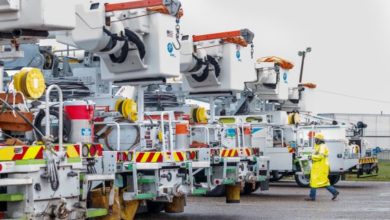No spike in infectious diseases reported in post-quake Haiti
PORT AU PRINCE, Haiti – More than one month on from the devastating earthquake in Haiti, no increase in infectious diseases has been reported, according to the United Nations World Health Organization (WHO).
The finding is based on epidemiological surveillance carried out by 52 sites across the Caribbean island nation.
WHO spokesperson Paul Garwood told reporters in Geneva today that respiratory infections were the main cause of morbidity, followed by diarrhoea and malaria. Two isolated cases of typhoid have been confirmed, while low numbers of measles and diphtheria cases have been reported but no confirmed.
Last week, the agency warned that sanitation has become a pressing need in Haiti and the lack of it could pose health problems for the nearly 1 million people living in temporary settlements ahead of the rainy season.
“Some 18,000 latrines are needed in Port-au-Prince for 900,000 people. Less than 5 per cent of the need for latrines has been met,” Mr. Garwood said. The need is calculated on the basis of one latrine per 50 people.
There are more than 1.2 million people are living in spontaneous settlements, according to the Office for the Coordination of Humanitarian Affairs (OCHA), and nearly 480,000 have left Port-au-Prince for neighbouring areas, putting additional stress on the rural population in those towns to support the displaced persons.
The 7.0-magnitude earthquake on 12 January claimed an estimated 200,000 lives and left another 2 million people dependent on aid.
Meanwhile, the UN Educational, Cultural and Scientific Organization (UNESCO) hosted a meeting to take stock of damage sustained by Haitian culture in the wake of the tremors, focusing on museums, archives and libraries, among others.
The agency has underscored the importance of cultural preservation in rebuilding Haiti, many of whose landmarks have now been reduced to rubble.
Marie-Laurence Jocelyn Lassègue, Haiti’s Minister of Culture and Communication, and representatives from the global police organization Interpol were among the participants at the gathering in Paris.
Last month, UNESCO issued a call to protect Haitian artefacts against pillaging from destroyed historical sites, including the Presidential Palace.
“This heritage is an invaluable source of identity and pride for the people [of Haiti] and will be essential to the success of their national reconstruction,” the agency’s Director-General, Irina Bokova, stressed.
She has asked Secretary-General Ban Ki-moon to mobilize the UN – including the world body’s peacekeeping mission, known as MINUSTAH – to do its utmost to secure landmarks containing Haiti’s artefacts, especially its art collections in the Cathedral in the capital, Port-au-Prince, as well as in museums and galleries.
The National History Park, a World Heritage site, is in Haiti’s north and is reportedly undamaged after the quake. It contains the Palace of Sans Souci and the Citadel, which date from the beginning of the 19th century and serve as universal symbols of liberty, being the first monuments to be constructed by black slaves who had gained their freedom.
However, the edifices in the town of Jacmel, a French colonial town in southern Haiti founded in the late 17th century, are said to have collapsed. Those edifices had been on UNESCO’s “tentative” list for inscription on the World Heritage List.
The agency has already helped to salvage the rich historical archives of George Corvington, the renowned Haitian historian, and is also contributing to save whatever panels or significant fragments remain of the painted murals that adorned the Episcopal Cathedral of the Holy Trinity in Port-au-Prince.



